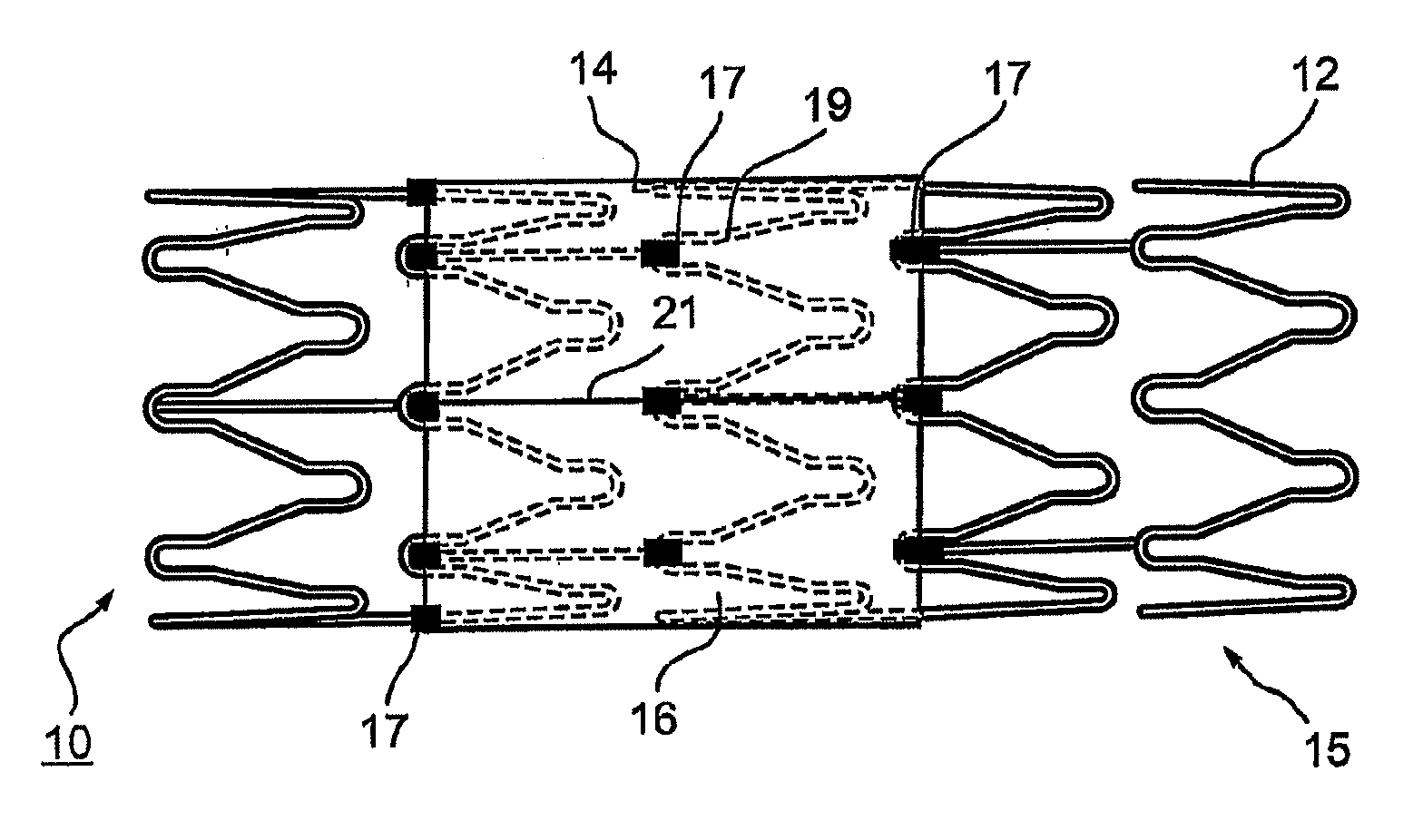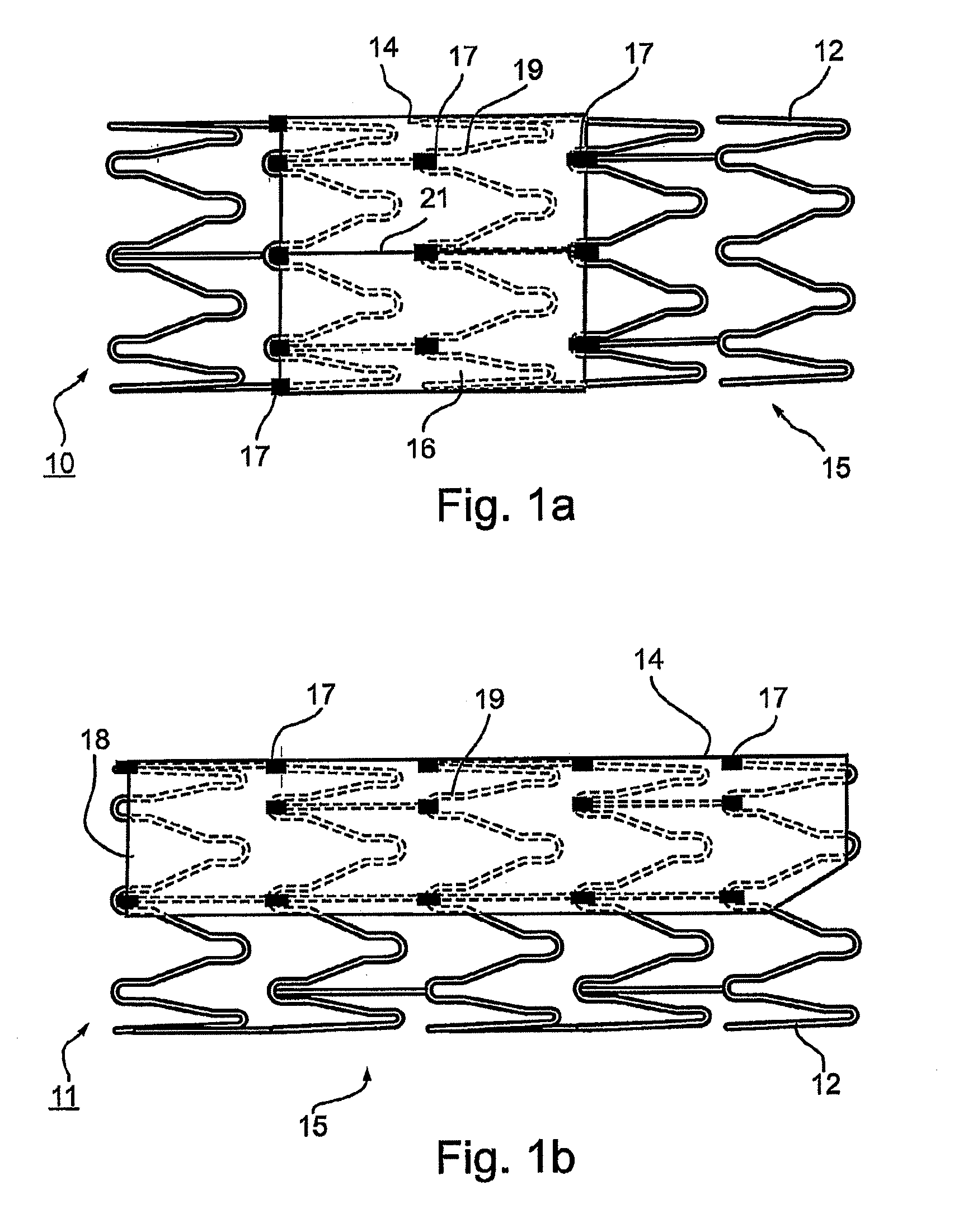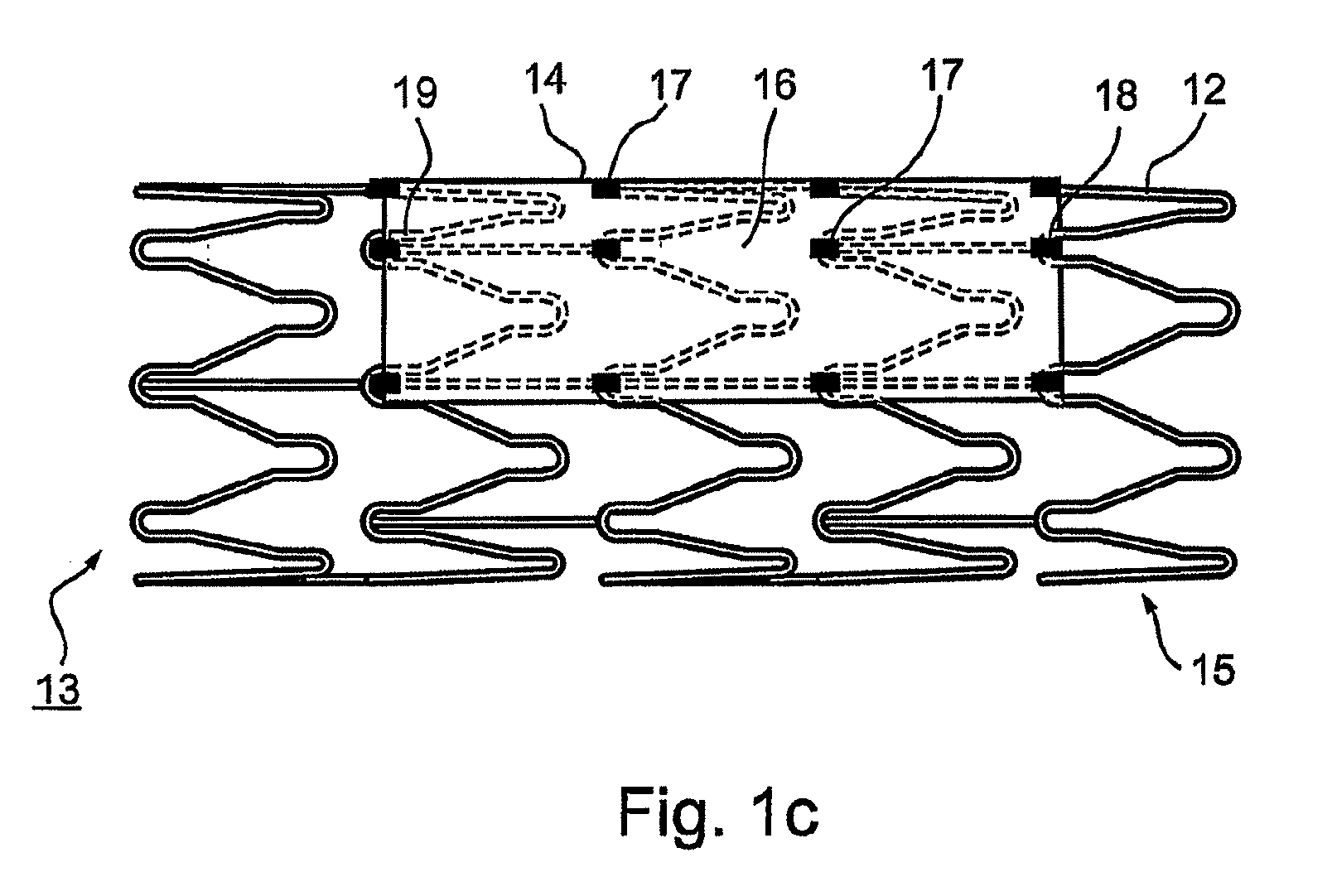Implantable graft assembly and aneurysm treatment
a technology of aneurysm and implanted grafts, applied in the field of medicine, can solve the problems of increased pressure on the brain, paralysis or coma of brain damage, fluid buildup, etc., and achieve the effect of limiting the flexibility of the implant and increasing the unexpanded profile of the implan
- Summary
- Abstract
- Description
- Claims
- Application Information
AI Technical Summary
Benefits of technology
Problems solved by technology
Method used
Image
Examples
first embodiment
[0164]a delivery system of the present invention including two guide wires where the orientation guide wire passes over the outside of a graft assembly is depicted in FIG. 5. In FIG. 5 is depicted the distal end of delivery catheter 90. Delivery catheter 90 is similar to that of prior art balloon catheters known in the art of stent delivery, and includes the distal end of a catheter guiding guide wire 66 running through a guide wire lumen 68 from the proximal end (not depicted) of guide wire lumen 68 out through the distal end of guide wire lumen 68 at the distal end of catheter 90. Graft assembly 76 including a graft 14 is crimped over a balloon 70, balloon 70 configured to function in the usual way. Unlike prior art stent-delivery catheters, delivery catheter 90 includes an additional orientation guide wire lumen that runs from the proximal end of delivery catheter 90 (not depicted) to an orientation guide wire port 94 that is positioned proximally to balloon 70. In FIG. 5, an ori...
second embodiment
[0166]a delivery system of the present invention including two guide wires where an orientation guide wire 92 passes between a delivery catheter 96 and a graft assembly 76 to emerge through an alignment hole 102 reinforced with gold grommet 104 penetrating through a graft 14 of graft assembly 76 is depicted in FIGS. 6A and 6B. FIGS. 6A and 6B depict the distal end of delivery catheter 96. Delivery catheter 96 is similar to that of prior art balloon catheters known in the art of stent delivery, and includes the distal end of a catheter guiding guide wire 66 running through a guide wire lumen 68 inside a main catheter shaft 98 from the proximal end (not depicted) of guide wire lumen 68 out through the distal end of guide wire lumen 68 at the distal end of delivery catheter 96. Graft assembly 76 including a graft 14 is crimped over a balloon 70, balloon 70 configured to function in the usual way.
[0167]Unlike prior art stent-delivery catheters, delivery catheter 96 includes an additiona...
PUM
 Login to View More
Login to View More Abstract
Description
Claims
Application Information
 Login to View More
Login to View More - R&D
- Intellectual Property
- Life Sciences
- Materials
- Tech Scout
- Unparalleled Data Quality
- Higher Quality Content
- 60% Fewer Hallucinations
Browse by: Latest US Patents, China's latest patents, Technical Efficacy Thesaurus, Application Domain, Technology Topic, Popular Technical Reports.
© 2025 PatSnap. All rights reserved.Legal|Privacy policy|Modern Slavery Act Transparency Statement|Sitemap|About US| Contact US: help@patsnap.com



